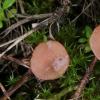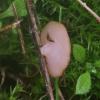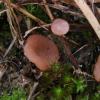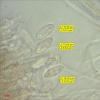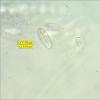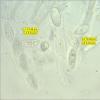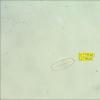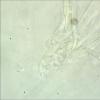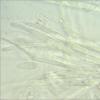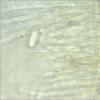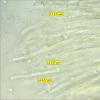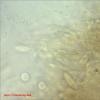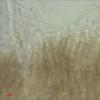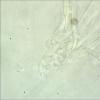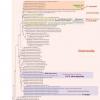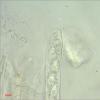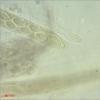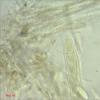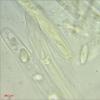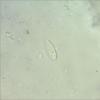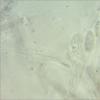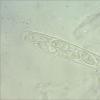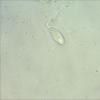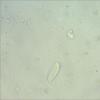
25-08-2025 17:37
 François Freléchoux
François Freléchoux
Bonjour,Nous avons trouvé samedi dernier à l'ét

20-08-2025 19:04
Ethan CrensonHello, This asco was found on the same wood as my

22-08-2025 08:41
Masanori KutsunaHello.Can anyone help me to get this article?Liu H

21-08-2025 02:18
Stefan JakobssonOn a necrotic section of a living Tilia cordata I

19-08-2025 20:58
Ethan CrensonHi all, Here is what I believe to be a Hymenoscyp
 Hello everyone,
Hello everyone,on November 26, 2020 I found an asco growing at the base of presumably Carex arenaria. The site is located in the gray dunes in Koksijde, Belgium (coastal area). The asco appeared in abundance and I think it could be a Rutstroemia.
Can somenone give me a clue?
Spores: elliptical; filled at the poles with clusters of droplets; Av 16.34x6.50µm (N = 17)
Asci: J-; uniseriated, 8-spored
Paraphyses: filiform; cilindric; sometimes branched at the top; multiseptated; finely encrusted (?); diameter on average around 3.17 µm
Hairs (?) or paraphyses on the edge: thick-walled; multiseptated; finely encrusted; tapered top; content colored.
The photo series in the same order with a final image of the outer excipulum.
All measurements were done in water.
Kind regards, William
Look for Rutstroemia maritima, The asci should have croziers.
Enrique

Thanks for your comment.
The asci do indeed have croziers, but the host plant here is not Ammophila arenaria.
I do not know whether Rutstroemia maritima has also been observed on other dunegrass varieties.
Do you sometimes have information about that?
R. paludosa occurs on various grasses but has a distinct stem. Here, however, all fruiting bodies are sessile or with a very short stalk.


thx for your reaction.
In any case, the substrate consists of a grass, not Carex. I will not be able to find a new collection at the moment, due to the recent frost, but I still have some material, including substrate, in collection.
In Lugol I notice no reaction, see photos.
However, I did the test with Melzer again and let the material soak a little longer. I think I see a very small reaction in the ascus top.
I also add some pictures of spores taken in water.
Sincerely,
William


I list the species as cf. Rutstroemia maritima because of its habitat and create an excicate.
Regards,
William


